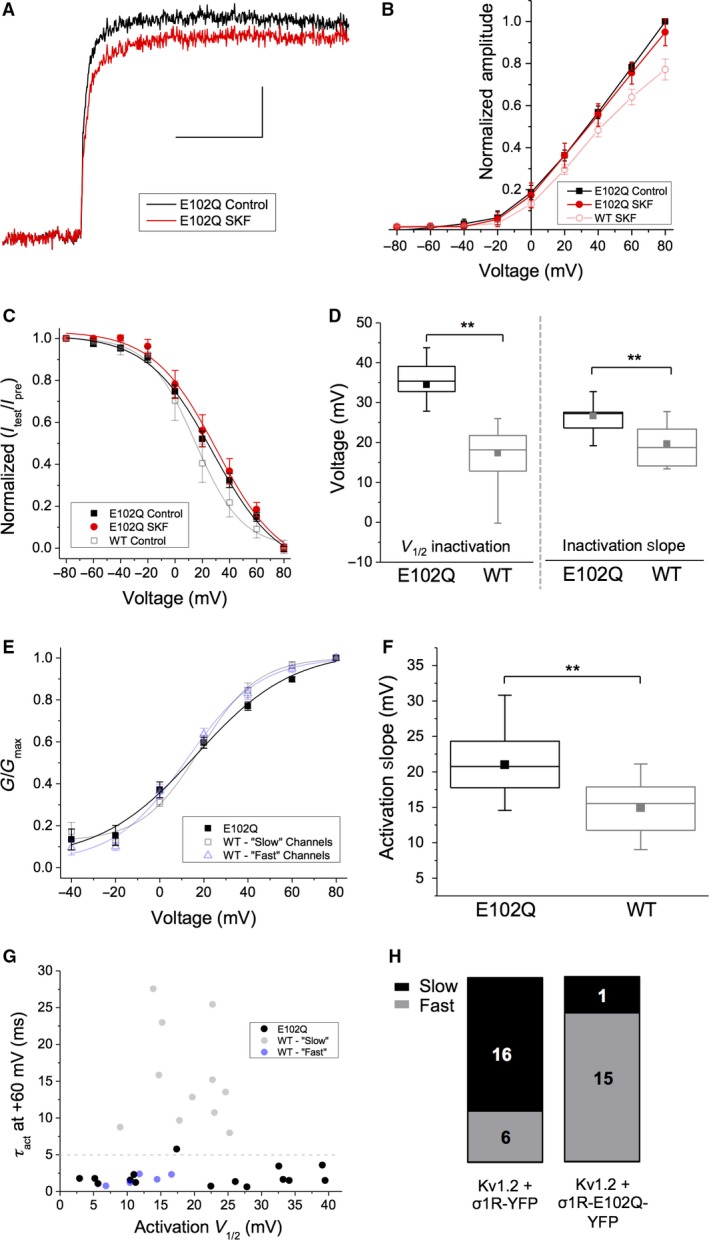Figure 9.

Expression of Sig‐1R‐E102Q abolishes the effect of SKF on Kv1.2 current amplitude and decouples the relationship between slow τ act and “high” V 1/2 of Kv1.2 channels in the “slow” gating mode. (A) Representative trace from a cell co‐transfected with Kv1.2 and Sig‐1R‐E102Q‐YFP (σE102Q‐YFP) in response to a depolarizing step from −80 to +80 mV in control conditions (black) and in the presence of SKF (red). Scale bar is 100 msec and 300 pA. (B–C) There was no significant decrease in current amplitude upon treatment with SKF at any voltage tested (B, red) or on V 1/2 of inactivation (C, red). (D–F) Box and whisker plots demonstrating that cells transfected with Sig‐1R‐E102Q‐YFP had Kv1.2 channels with a significantly right‐shifted V 1/2 (D, left) and slope of inactivation (D, right) compared to those transfected with Sig‐1R‐WT‐YFP. Sig‐1R‐E102Q‐YFP cells also expressed Kv1.2 channels with a significantly shallower activation slope than observed in cells transfected with Sig‐1R‐WT‐YFP (F). (G–H) The relationship between V 1/2 of activation and τ act observed in Kv1.2 channels in cells overexpressing with Sig‐1R‐WT‐YFP (G, transparent black and blue dots), is abolished in cells overexpressing Sig‐1R‐E102Q‐YFP (G, black dots). Although a widespread of V 1/2 of channel activation is observed in these cells, the τ act remains ≤ 5 msec irrespective of V 1/2, with only one cell being classed as “slow” with a τ act of ~5.5 msec (H). Data are expressed as mean ± 95% CI, except for scatterplots where each point represents a channel population sampled from a single cell. Curves shown are single Boltzmann fits to the averaged data unless otherwise stated. V 1/2 values cited are derived from the mean of a Boltzmann fit to each individual cell in the dataset. In box and whisker plots, boxes represent data between first and third quartile, while whiskers represent 1.5 × IQR. Asterisks indicate statistical significance; single asterisks (*) represent P < 0.05, while double asterisks (**) indicate P < 0.005.
